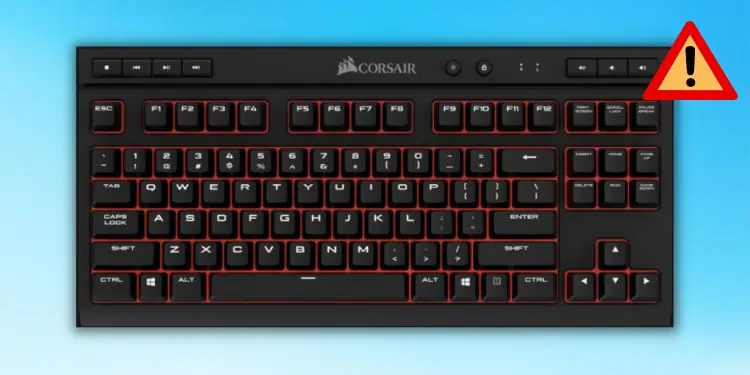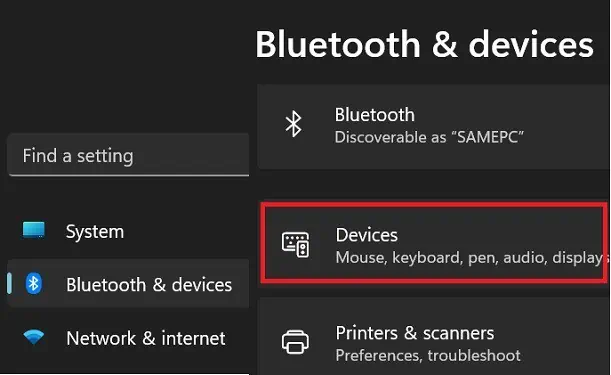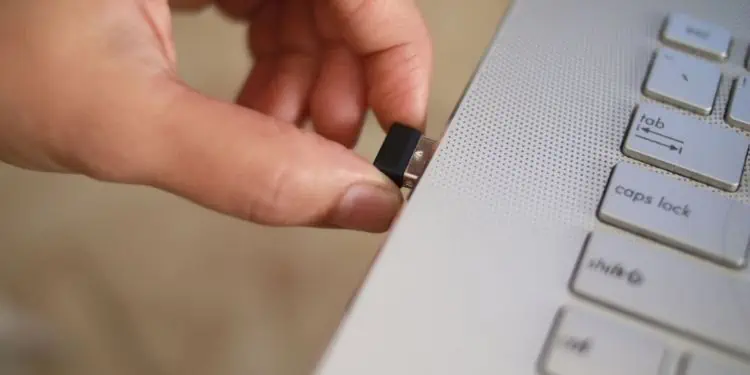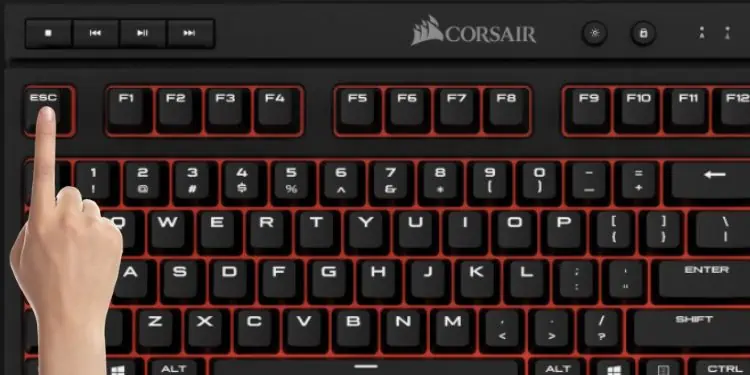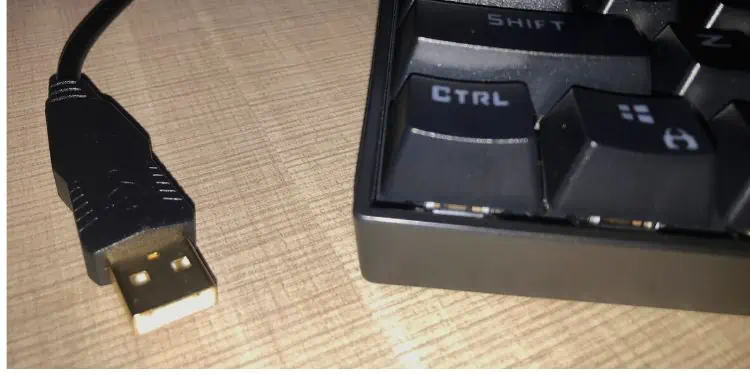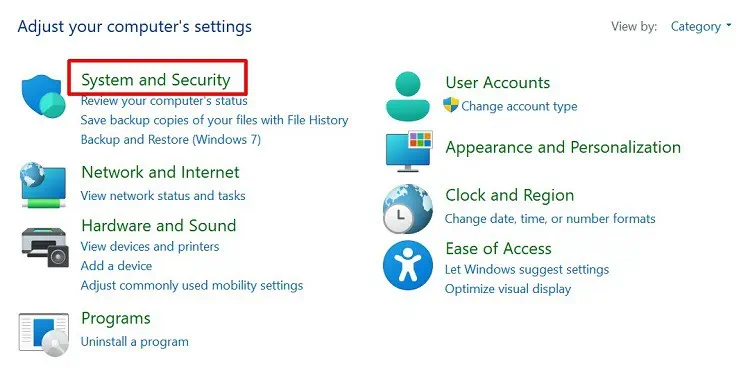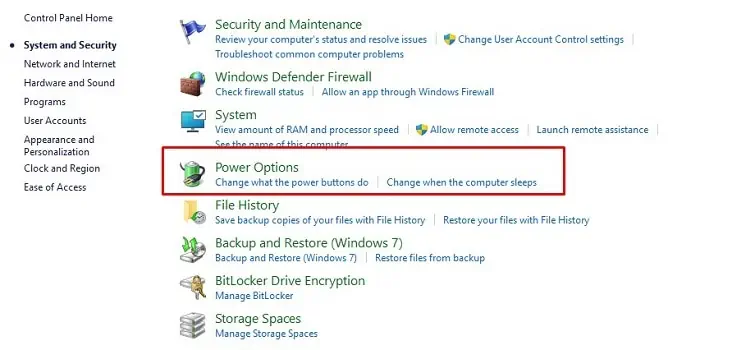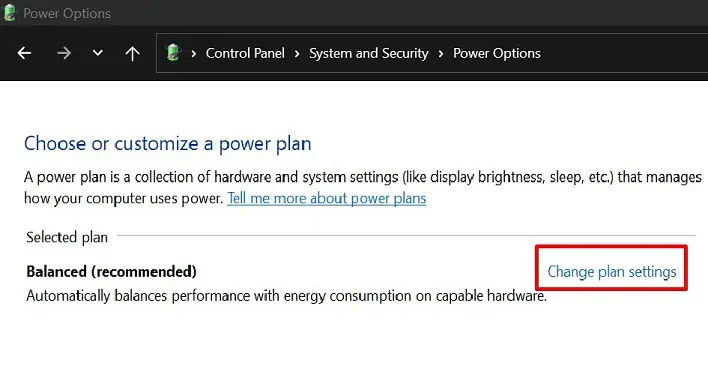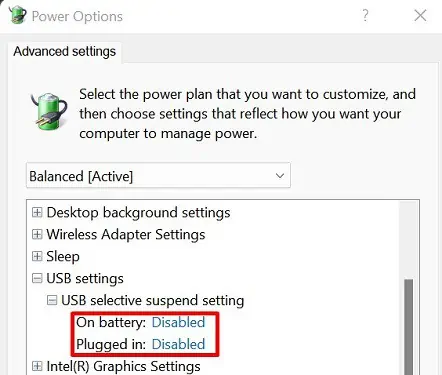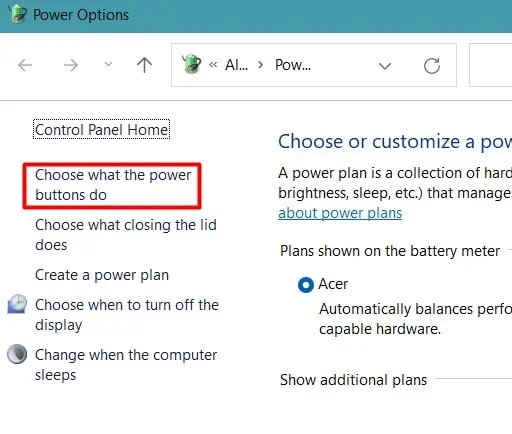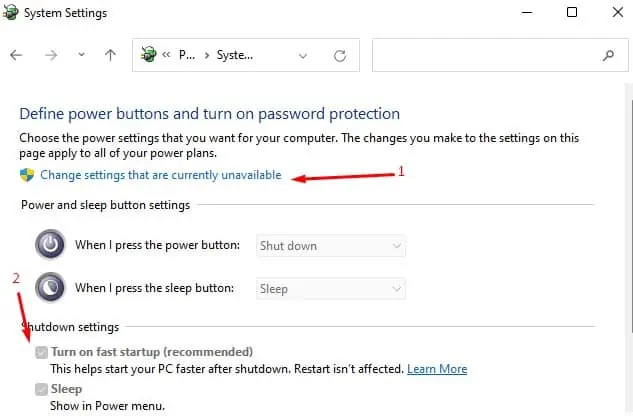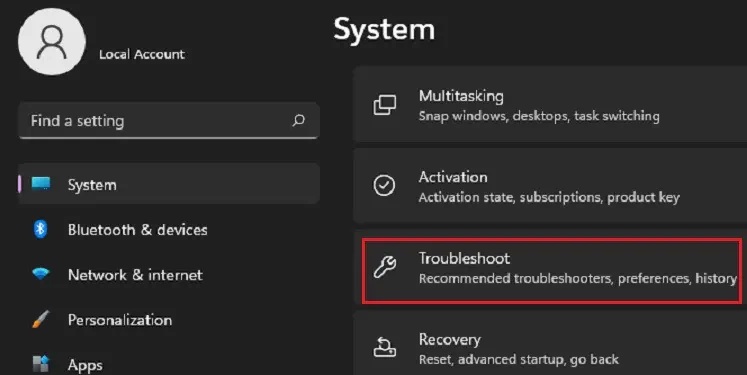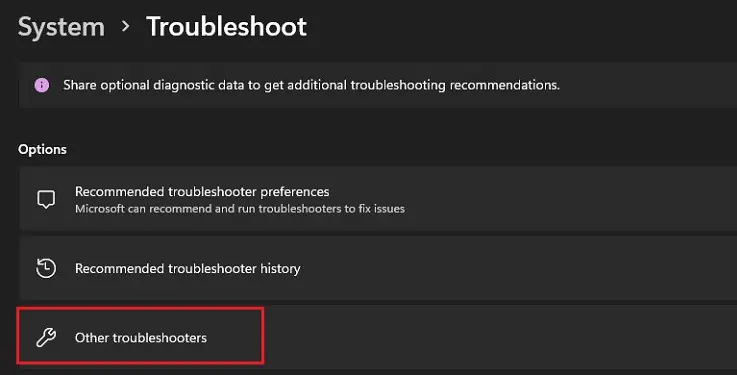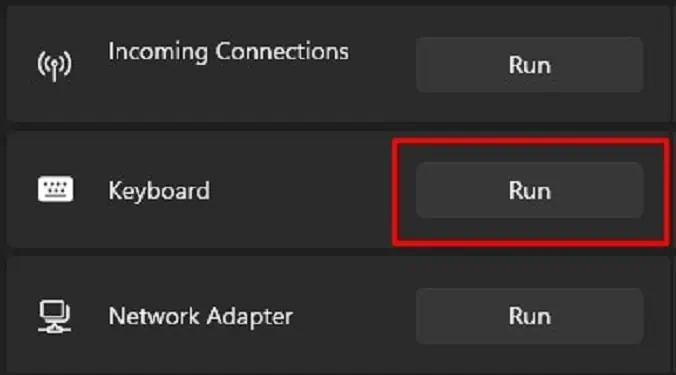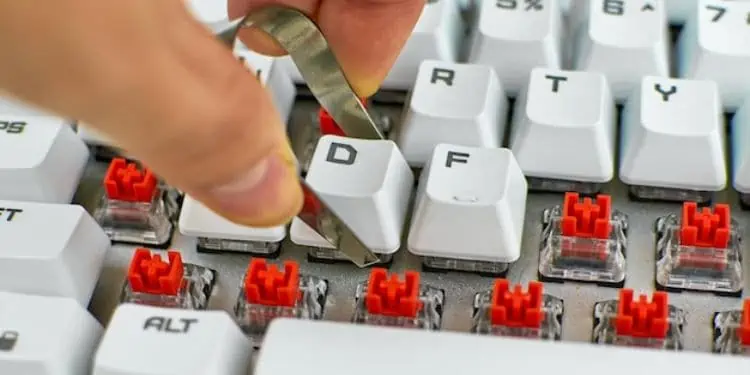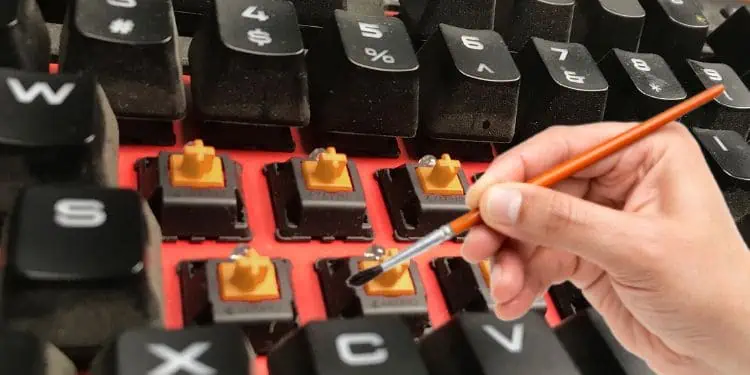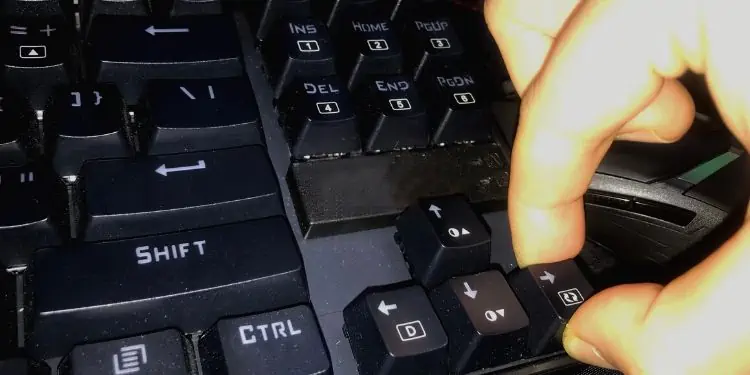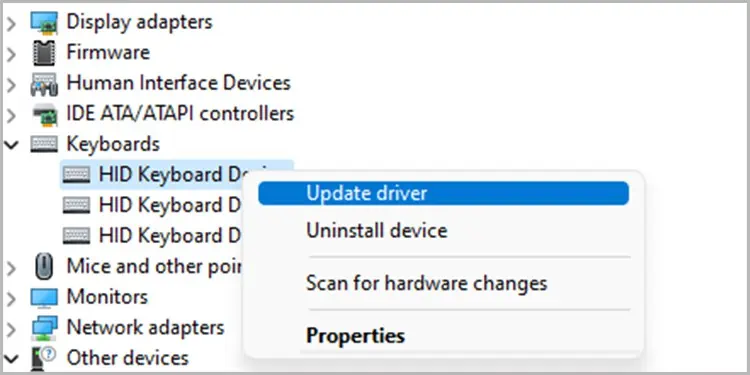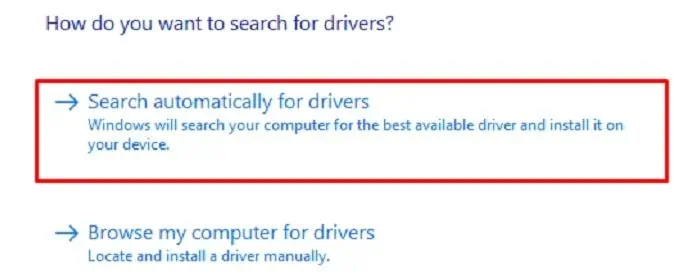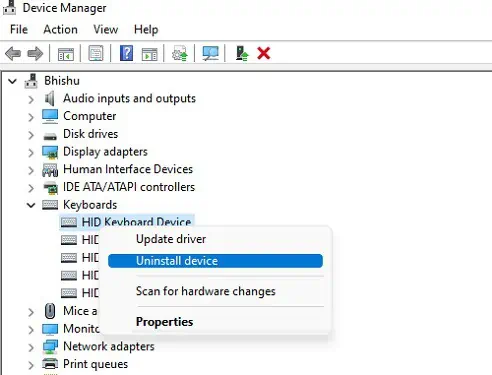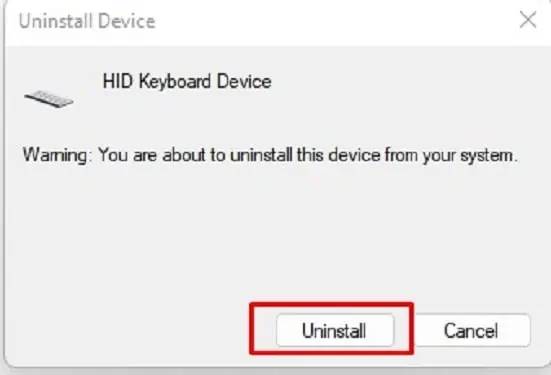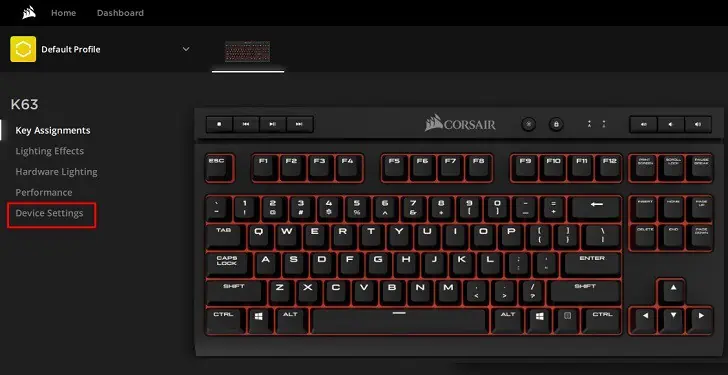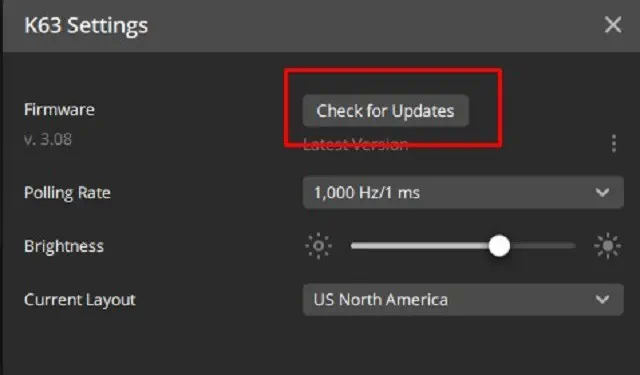Corsair is a widely popular peripheral manufacturer that crafts both RGB mechanical and wireless keyboards. However, like every other keyboard, even a Corsair model can sometimes malfunction.
Reportedly, some users have experienced lighting issues, while others claim that their Corsair keyboard has become unresponsive. Moreover, few claim that their keyboard doesn’t work temporarily after booting Windows or a particular key like the Esc key stops working.
Well, these problems can arise due to both hardware and driver issues. So, you might need to tweak a few settings or perform a few hardware fixes to solve the problem. Now, without further delay, let’s jump into why is your Corsair keyboard not working and its possible solutions.
Why is the Corsair Keyboard Not Working?
- Keyboard connection issue
- Outdated or corrupted keyboard driver
- Outdated Corsair keyboard firmware
- Harmful apps or viruses are tampering with your keyboard
- You have spilled water on your Corsair keyboard that has short-circuited the device
- Hidden debris inside the keycaps is stopping you from pressing the keys properly
- Low batteries in wireless Corsair keyboards
11 Ways to Solve Corsair Keyboard Not Working
The reason behind the malfunction of your Corsair keyboard can depend on your model. If it’s wireless, there may be issues with your battery or wireless connection. On the other hand, the USB keyboards do not function well due to cable breakage or poor connection on the port.
No matter the type of Corsair keyboard you’re using, your driver or even the operating system could create an issue. So, before moving on with the major fixes, we recommend updating your Windows first. Often, this resolves any underlying issues or bugs with your Corsair keyboard.
If the Windows update didn’t work, follow the below fixes one by one, as one of them should make your Corsair keyboard function well.
Check Keyboard Connection
Firstly, confirming that the Corsair keyboard is successfully connected to the dedicated laptop or CPU ports is important.
Well, most modern Corsair keyboards come with USB cables. So, you need to check whether the connection is tight in the USB port. Also, examine whether any part of the cable is broken.
Furthermore, internal damage to ports can also create issues with your keyboard’s functionality. So, connecting the cable to another port may solve your issue.
For a wireless Corsair keyboard, you must ensure that the USB dongle has been properly inserted into the port. Well, if you lose this small wireless connector, you’ll have to replace it with a new one.
- Ensure that you have turned on the Bluetooth and the power buttons on your keyboard before using them.
- In Windows, go to Settings > Bluetooth & Devices. Then, turn on the Bluetooth.
- Now, under Devices, check if your Corsair model is connected. If it shows Paired, click on the Kebab menu and choose Connect.
Check Batteries or Charge in Wireless Keyboard
Speaking more about the wireless Corsair keyboards, some may have a charging port, while some work on external batteries. So, it’s pretty obvious that a low charge or deteriorated battery won’t help you run the keyboard.
Interestingly, most keyboards connected via Bluetooth have a charging facility. Moreover, you can even check your battery percentage within the Windows Settings:
- Navigate to Settings from the Start Menu.
- Next, go to Bluetooth & Devices and select Devices.

- Find your peripheral and check the keyboard’s battery level.

- If the device has a low charge, immediately charge it using its dedicated keyboard charger.
But, if your keyboard runs with AA or AAA batteries, you’ll need to check whether they have been connected well. Sometimes, removing and reinserting batteries may also solve your Corsair keyboard that’s not working. But, if it doesn’t, it’s probably because the batteries are dead and you need to replace them.
Perform Keyboard Reset
If your Corsair keyboard isn’t responding well, the best method is to perform a keyboard reset. Well, resetting is different for wired and wireless keyboards. In this section, we will cover both of them.
On Wireless Corsair Keyboard
If you possess a wireless Corsair keyboard, here’s how you can reset it:
- First of all, remove the USB dongle from your PC. You can skip this step for a Bluetooth-supporting keyboard.

- Next, toggle off the keyboard switch.
- Now, keep holding your Esc key and turn your keyboard on.

- Once you see the flashlight, you can now release the Esc key.
- Finally, insert the USB dongle, and you should be able to use the Corsair keyboard.
On Wired Corsair Keyboard
In a wired Corsair keyboard, resetting depends on your model. Here, we have included simple steps that should work on most models:
- First of all, remove the USB cable from your PC’s port.

- Now, keep holding the ESC key and insert the USB cable back into the computer.

For a K55 keyboard, you’ll have to press the FN + F4 keys. - Next, wait until your Corsair keyboard flashes. This might take 5 to 10 seconds, depending on your model.
- Once again, remove the USB cable and plug it back again.
- Now, check if your keyboard works fine. If it still doesn’t, try updating the firmware, which we have discussed below.
Ensure the Lock Button is Turned Off
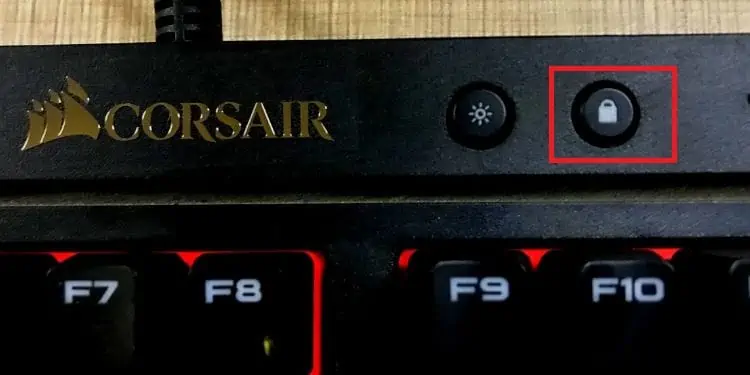
The lock button present with the media keys on a Corsair keyboard is meant to disable the Windows key on your computer. Generally, this is done to prevent accidental clicks while playing games.
However, the lock button shouldn’t tamper with the other keys. So, this fix is for those users whose Windows key isn’t working.
If the LED on the lock button is glowing, know that it is turned on. To turn it off, all you have to do is press the lock button with the lock icon imprinted on it. Now, this should make your Windows key work again.
Disable the USB Selective Suspend Setting
When the USB selective suspend setting is enabled, the hub driver suspends a particular port to reduce power consumption. So, when Windows boots, the hub driver might disable the port your keyboard is connected to.
Hence, some users face temporary issues with their Corsair keyboard. Thus, we recommend disabling the feature:
- First, use the Magnifier on the taskbar to search and go to Control Panel.
- Then, choose System and Security.

- Next, click on Power Options.

- Under Selected Plan, select the Change plan settings link.

- Now, find and choose Change advanced power settings.

- From the list, expand the USB Settings by clicking on the ‘+’ icon.
- Again, tap on the ‘+’ icon beside the USB selective suspend setting.
- If you’re on a desktop computer, change the Setting option to Disabled. But if you’re using a laptop, change both the On Battery and Plugged In options to Disabled.

- Finally, choose Ok and restart your PC. This time, your Corsair keyboard should function after the bootup.
Disable Fast Startup
Basically, enabling the fast startup settings will send your computer to hibernate instead of shutting it down. So, if your PC doesn’t shut down, the important system updates, including keyboard bugs and fixes, won’t happen.
Clearly, this will create serious issues with your input device, sometimes stopping it from working. The only way to prevent this problem is to disable the fast startup option, and here’s the correct way to do it on Windows 11:
- Launch Control Panel and go to System and Security > Power Options.
- Select the Choose what the power buttons do option from the left side of the window.

- Then, click on Change settings that are currently unavailable to enable tweaking the Shutdown Settings.
- Once done, you’ll now get the excess to make necessary changes. Simply uncheck the Turn on fast Startup option.

- Now, press the Save Changes button and shut down your PC.
- Finally, boot Windows and check if your Corsair keyboard has started functioning.
Run the Dedicated Keyboard Troubleshooter
Windows has a dedicated troubleshooter that also solves your Corsair keyboard bugs and sets them to default. This way, anything stopping you from using the device will be resolved. Here’s how you can successfully run the keyboard troubleshooter on Windows 11:
- Navigate to Start Menu > Settings > System.
- Scroll down until you see Troubleshoot and choose it.

- Under Options, click on Other Troubleshooters.

- Find and press the Run button beside Keyboard.

- Wait until the system detects and fixes any issue within the OS or your Corsair keyboard.
Fix Hardware Issues
If there’s dust and grime stuck within the keys, you may need to clean your mechanical keyboard. Also, if you have spilled any liquid, there’s a possibility that your keyboard might short-circuit. Before that happens, here’s what you need to do:
- Immediately unplug your keyboard cable. If your Corsair keyboard has a passthrough port, take its cable out.
- Now, turn your device upside down and shake it to eliminate any liquid or debris.
- Then, start removing your keyboard keys one by one using a keycap puller.

- With a microfiber cloth or brush, clean your Corsair keyboard surface. Moreover, you can even use Isopropyl Alcohol in a minimum amount to absorb moisture.

- Also, make sure you clean the corners of the switches.
- You can lube the switches using a spray can for Corsair keyboards that are not hot-swappable. Else, you can press the switch and lube them with a few drops.
For K70 Pro Mini Wireless (the first-ever hot-swappable Corsair mechanical keyboard), you’ll need to use a Switch Puller to remove the switches. Then, lube each part one by one. - Now, reattach all the keyboard keys and connect your keyboard once it’s dry.

- Finally, check whether your keyboard works or not.
If the cleaning procedure didn’t work, you’d need to desolder your Corsair keyboard to fix the internal issues:
- Using a screwdriver, unscrew all the screws from the back side of your keyboard.
- Slowly separate the upper part from the lower base.
- Now, search for the keyboard connectors and pull them out. While doing so, you might need to apply a little pressure but be careful as you may break it.
- Then, start cleaning the surface using a can of compressed air.
- Once done, plug in the connector back to where it belongs and tighten your Corsair keyboard screws.
- Finally, connect it to your laptop or CPU and check if the keyboard is working again.
Update Keyboard Driver From Device Manager
If it’s not due to hardware problems, it’s probably because of an outdated keyboard driver. So, here’s how you can update it:
- Right-click on the Windows icon and choose Device Manager.
- Once a new window pops up, expand the Keyboard option.
- Next, right-click on your Corsair keyboard and select Update Driver.

- Then, click on Search automatically for drivers.

- Wait until the system searches for a possible update and installs it.
Uninstall and Install Keyboard Device Again
If updating the Corsair keyboard driver doesn’t work, you can try uninstalling it. Follow the below steps to do just that:
- Open Device Manager and expand the Keyboard option like earlier.
- Right-click on the Corsair keyboard, and this time, choose Uninstall device.

- Once the warning message pops up, click on the Uninstall button.

- Now, restart your PC. This will install your Corsair keyboard driver again, setting it to default.
Update Corsair Keyboard Firmware Using iCUE Software
If none of the fixes worked for you, there’s probably a problem within your Corsair keyboard firmware.
Interestingly, you can download the iCUE software from the manufacturer’s official site. This program doesn’t just assist you in updating the firmware but also helps tweak several settings, like changing RGB and increasing polling rate.
Once you download the software, follow the steps below to update the firmware. For demonstration purposes, we have used the Corsair Gaming K63 Keyboard:
- Launch the iCUE application and create your profile. Well, you can move ahead with the default profile as well.
- If you’re using multiple Corsair devices, select the Keyboard icon.
- Next, choose Device Settings.

- Once the K63 Settings launches, click on the Check for Updates button next to Firmware.

- Finally, wait for the software to detect and update the latest version of the firmware.

